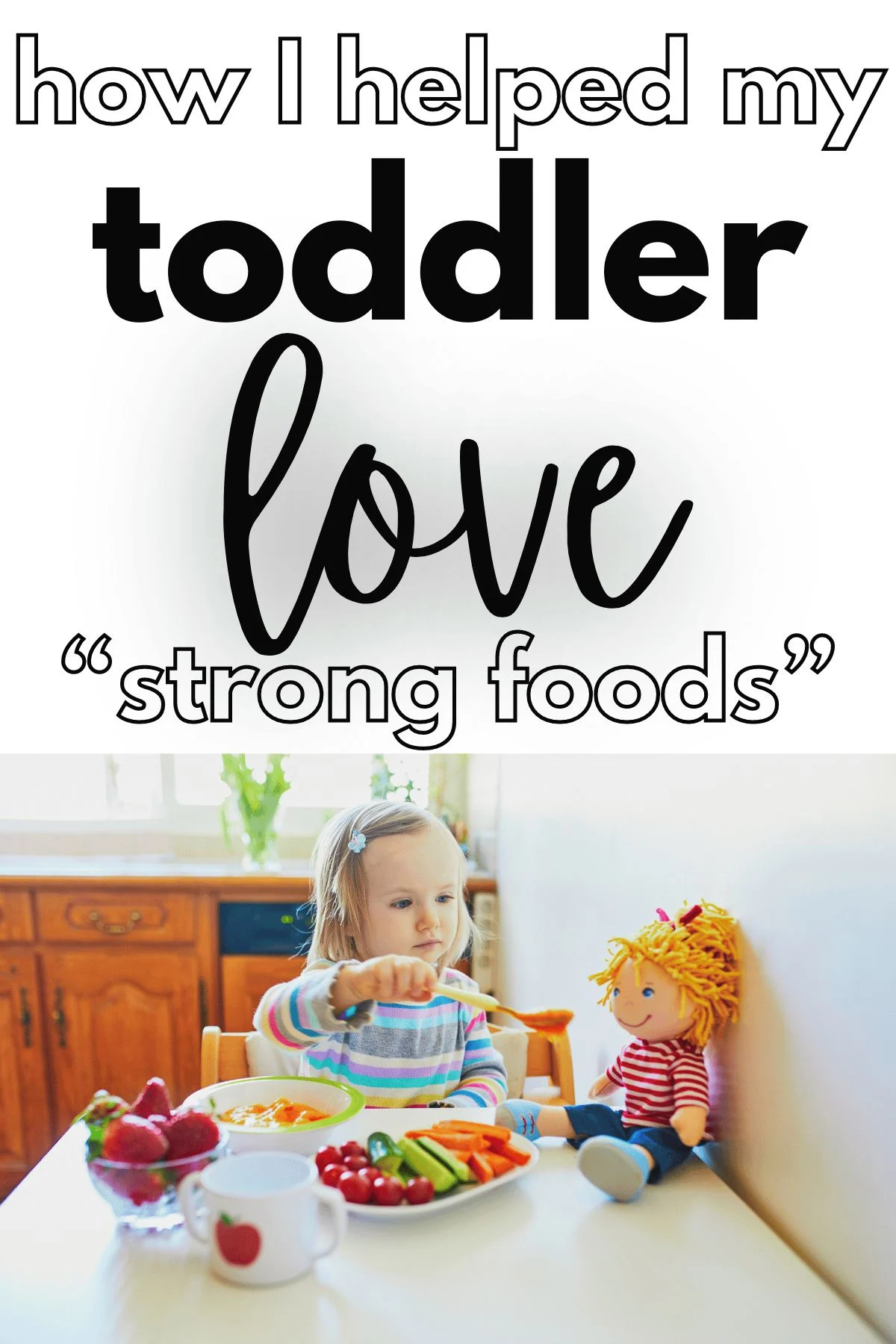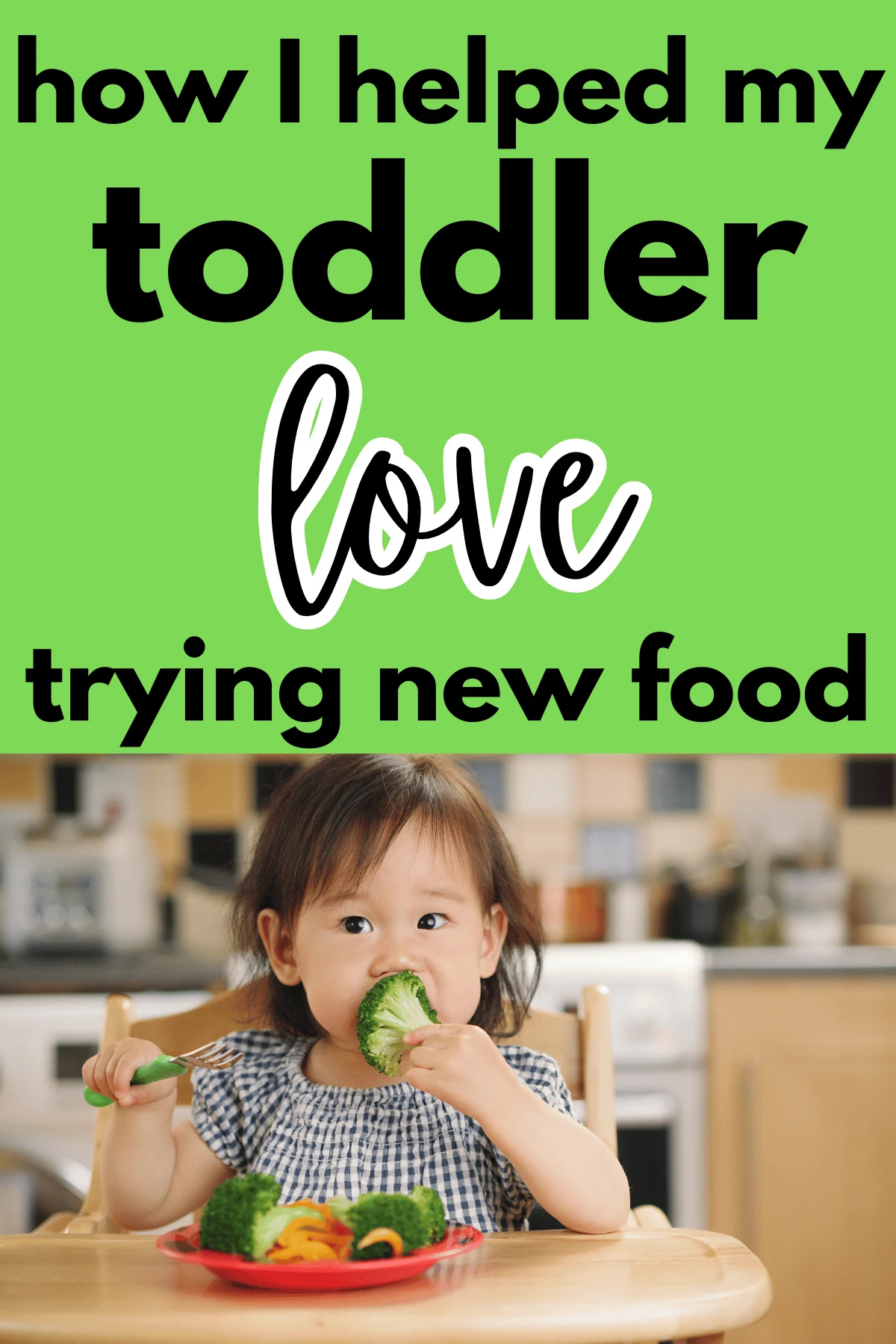Does anyone else struggle getting their kids to eat fruits, veggies and protein? Sometimes as a mom I feel like I have a million different jobs– from nurse, to chauffeur, to teacher, to chef, the list goes on. And on top of it all I have to be what? A dietitian too?
It’s no secret that Cheeze-it’s and chips taste better to kids than broccoli and blueberries. But we’ve been tasked with the responsibility to help our children flourish. And in order to help both their bodies AND minds grow, we need to teach them to love “strong foods”.
The word “healthy” usually has a positive connotation in people’s minds, while “unhealthy” holds a negative connotation. So, when my oldest daughter was about 2 years old, we decided that instead of deeming foods “healthy” or “unhealthy” we would say “strong” or “fun”.
Because let’s face it, a brownie is “fun” to have every once in awhile! And it’s actually healing for our minds to have something sweet to look forward to so we don’t deprive ourselves all the time.
My kids haven’t always been the best eaters. However, in recent months we have seen a shift in their desire to at least TRY the foods we are eating. At first we were a little concerned… “who are you and what have you done with our kids”?
But it’s been fascinating to see that they have had a shift. They have actually shown more and more interest in “strong foods” without us even forcing or bribing them with, “if you eat all of your vegetables you can have dessert”.
I want to share a few simple tricks that we tried that seemed to help our kids. Disclaimer: this didn’t help overnight. It took a few months, but we were patient and kept modeling good behavior of eating “strong foods” and eventually they came around.
9 Tips That Helped Our Kids Eat “Strong Food”

1. Daniel Tiger
You knew this one would be in here, huh? Daniel Tiger saves the day… again. Let’s face it, the song is catchy! And you can’t help but sing it when your toddler seals their little lips shut when you move a spoonful of a new dinner toward their mouth.
“You gotta try new food cause it might taste good”. It has helped our kids to read the book as well as watch the episode. And we even made banana swirl and Veggie Spaghetti per their request!
You can listen to the song here.
2. Presentation
I didn’t think this was a big deal, but it helped our girls so much! When I originally had the idea to make the food “look yummy” I thought, “well that’s too much work. I don’t have time for that”.
Then I had the thought, “What if I just used the cutting board as the plate?” So I found a cute wood cutting board to chop up the veggies on, threw some grapes and crackers on there and put a bowl of hummus in the middle.
And viola! My kids felt like they were eating at a restaurant! They were also excited that THEY got to grab the things off of the board themselves instead of me putting it on their plate beforehand.
We have resorted to this a lot of times for dinners as well. They eat so much better if it “looks cute” and I learned that if you do it right, it doesn’t take any more time than dishing up each person’s plate (in fact it’s actually simpler and usually less dishes).
3. Hide The Veggies (Then Tell Them Later)
I learned this trick from a friend. Shred up some carrots and throw them in the spaghetti sauce. Blend the broccoli for the soup. Cut up the celery in microscopic pieces for the casserole.
It seems silly, but if they can’t see it, then they might eat it. And once they taste it and love it, we say, “so did you know you just ate a whole cup of broccoli?”
Usually they are blown away and so proud of themselves that they will actually try raw broccoli the next day saying “Yeah, I already love broccoli”.
4. Keep Fresh Cut Veggies In The Fridge
We started cutting up our vegetables and putting them in containers in the fridge.
For celery, we cut in strips and submerge it in water then seal the container. With the grapes, we cut the stems so they are in clusters of 4-5 grapes. Then put them in a bowl or rectangle container.
With cauliflower and broccoli, we cut it up and seal it in an airtight container. Even strawberries and blueberries can be put in a more accessible bowl in the fridge.
That way, when our kids are hungry and they open the fridge, they see a wide variety of fruits and veggies that all look appealing to them AND they are ready to be plopped in their mouth instead of needing me to prep it for them.
5. Have Accessibility In The Pantry
We made little bins in the pantry with easy to reach strong foods that they love. Some of these include popcorn, fruit bars, and lots of different nuts.
An idea we are hoping to try soon is to place all of our nuts (pistachios, almonds, cashews) in open mason jars on the kids’ eye level. So when they open the pantry door, there is some protein ready for them to reach in and grab with those cute little hands.
6. Utilize Dips
Most kids love dips. My kids LOVE dips. As in, they usually eat most of the dip first with a spoon or their fingers before dipping something in it.
Ketchup. Hummus. Ranch. BBQ sauce. JDAWG sauce. Fry Sauce. Chick-fil-A sauce. Polynesian sauce. You name it. They love it.
Because of this, we almost always have a dip to go with the vegetables. It’s fun to challenge them to dip a new vegetable in a new sauce to tell us if it’s good or gross. They think it’s funny!
We also pretend that the dip makes our veggies have “hats”. So if they dip a carrot in the ranch they turn to us and say, “do you like my hat?” and we say “No, I do not”.
So then they chomp it off and get a “new hat” by dipping it again and repeating the question.
7. Follow The “Touch, Lick, Bite” Method
This is an idea that an occupational therapist gave to me. We don’t want to force kids to eat food because then they develop a negative relationship with it.
Instead, in our family, we have tried this method of “touch, lick, bite”. First, we have them touch it by saying, “Look at that grape. It looks like a shape. Can you hold it in your hand and tell me what shape it is?”
Then once they are comfortable touching it, we say something like, “Do you think you can touch it with your tongue too? Give it a little lick?”
You know what comes next. “I think Mr. Grape might be kind of juicy! Can you bite him open with your teeth?”
Sometimes all three of these happen at one meal, and other times we just do one of them and each day slowly work our way up to actually tasting the food.
8. Model
I have learned that children are little sponges. Which, I am sure you have learned as well.
They soak up everything and anything we say OR do. It’s the same with food. If I eat strong foods for my mealtime and snacks, then eventually they will want to as well.
It might take a long time, but they will get there! My 5-year-old has loved trying new foods with us ever since she was 2. But my 3-year-old, on the other hand, has had a harder time with it.
I thought she would never come around, but just recently after watching her parents and older sister for so long, she finally started to want some of the foods that we eat!
It was a miracle! Kids definitely watch us and want to be like us.
9. Read Books About Food
There are so many awesome books at the library to check out on food. We have found some about how different fruits and vegetables grow to read to our kids.
It helped so much for them to see where the food actually came from and to see other kids in the book eating those foods.
Helping our kids get to a point where they have an interest in strong food has been a battle for sure. But as we have stuck with it, I can now say that it was totally worth it! It’s neat to see your kids start to love some of the food that you love and that you know will help their brains and their bodies to feel so much better!
And now, wish us luck as we start all over again with our third child and training him to love “strong food” too!


Ursans
Saturday 6th of September 2025
I also covered this in detail on my blog about ‘Healthy Rotis for Kids’ – visit on website for more.